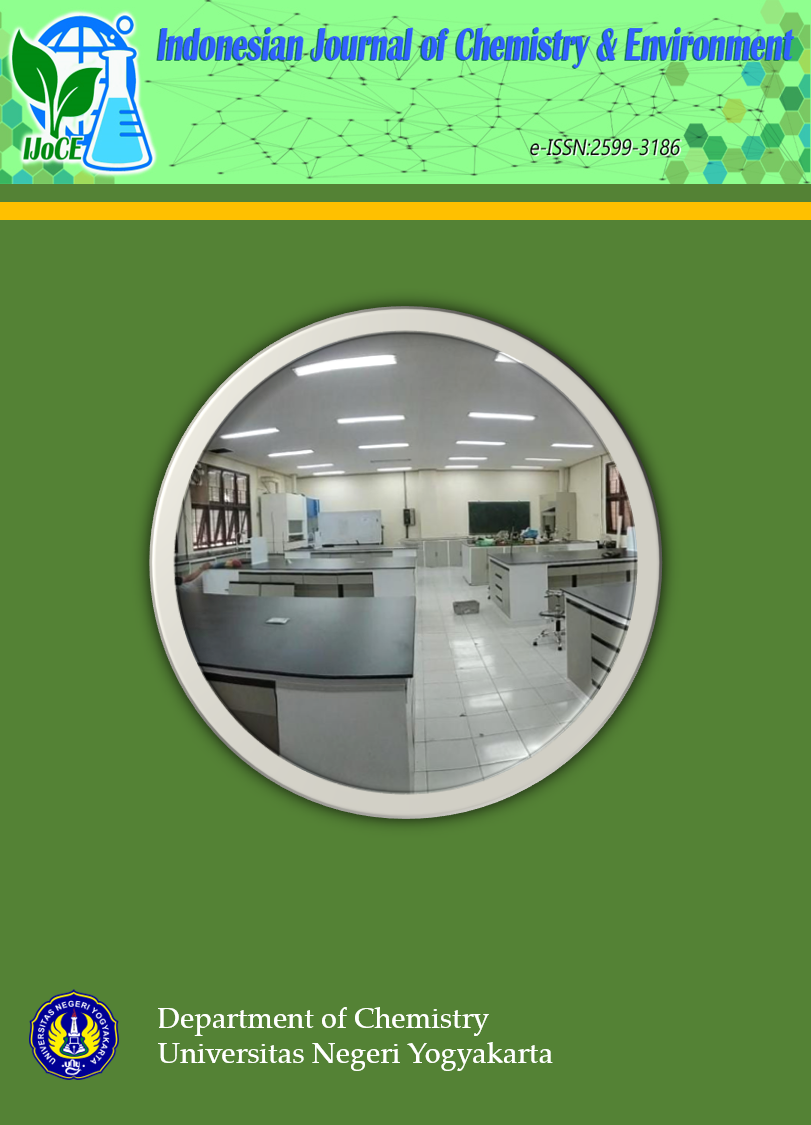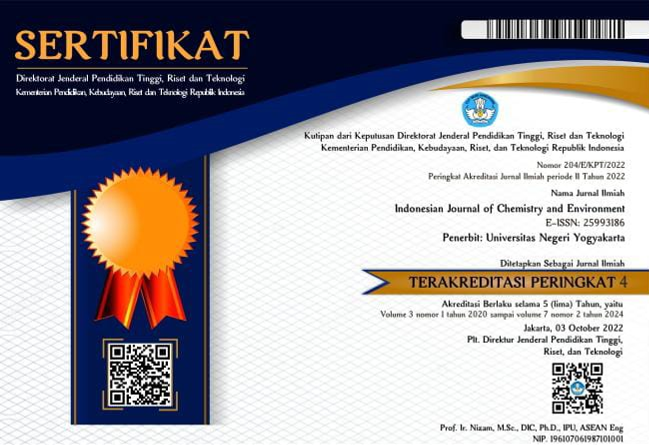Synthesis and Characterization of Montmorillonite Membrane for Nickel and Zink Metals Filtration in Electroplating Liquid Waste
DOI:
https://doi.org/10.21831/ijce.v3i1.40818Abstract
The application of ceramic membrane technology has been applied in water treatment. The montmorillonite used was analyzed by XRD and showed typical montmorillonite peaks at 2θ 7.49o, 28.07o, 35.75 o, 40.73o, 49.14o dan 67.03o. Montmorillonite membrane was made by the process of dry pressing.PVA in montmorillonite is expected to function as a binder agent. The result variation on PVA composition 0%, 1%. 2%, 3% and 4%, show the flux value that increased with the adition of PVA composition. The montmorillonite membrane with a 4% PVA composition a result greatest flux and porosity values compared to other compositions. The resulting flux value is 1596.5679 L/m2.h and porosity 20.9477%. SEM-EDXtest result showed montmorillonite membrane is a porous membrane that is spread and evenly distributed but the resulting pore is not uniform. Montmorillonite membrane rejection of nickel metal was 55.5352% dan zink metal was 37.8614% with a 40-minute filtration process.
Downloads
Published
2021-05-19
How to Cite
[1]
Hidayah, I. 2021. Synthesis and Characterization of Montmorillonite Membrane for Nickel and Zink Metals Filtration in Electroplating Liquid Waste. Indonesian Journal of Chemistry and Environment. 3, 1 (May 2021), 19–26. DOI:https://doi.org/10.21831/ijce.v3i1.40818.
Issue
Section
Articles
Citation Check
License
Authors who publish with this journal agree to the following terms:
- Authors retain copyright under a Creative Commons Attribution–ShareAlike License (CC BY SA) that allows others to share: copy, and redistribute the material in any medium or format, Adapt: remix, transform, and build upon the material, for any purpose, even commercially.
- Authors are able to enter into separate, additional contractual arrangements for the non-exclusive distribution of the journal's published version of the work (e.g., post it to an institutional repository or publish it in a book), with an acknowledgement of its initial publication in this journal.
- Authors are permitted and encouraged to post their work online (e.g., in institutional repositories or on their website) prior to and during the submission process, as it can lead to productive exchanges, as well as earlier and greater citation of published work.










